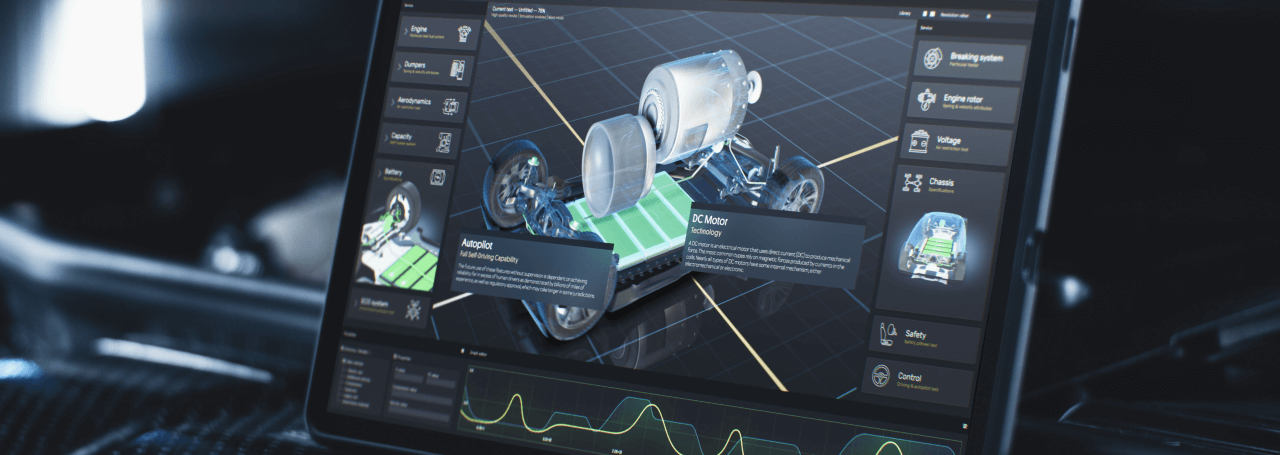- AMOLED Displays: What Is an AMOLED Screen & What Are AMOLED Display Benefits
- Introduction to OLED technology
- What Is An AMOLED Screen?
- What does AMOLED mean
- How AMOLED Works
- Key Components
- AMOLED vs OLED
- AMOLED Display Benefits
- Faster Refresh Rates
- AMOLED vs Retina vs Other Display Technologies
- AMOLED For Industrial Applications
- Riverdi Product Catalog Overview
- The Future Of AMOLED
- Summary
- AMOLED FAQ:
AMOLED Displays: What Is an AMOLED Screen & What Are AMOLED Display Benefits
AMOLED (Active-Matrix Organic Light Emitting Diode) displays have become increasingly popular in recent years, providing stunning visuals and vivid colors in everything from smartphones to TVs. Their vibrant colors, high contrast ratios, and thin profiles make them a preferred choice for many manufacturers. But what is an AMOLED screen, what exactly makes AMOLED screens so vibrant, and why are they well-suited for industrial applications? This article will explore the technology behind AMOLED, what does AMOLED mean, how does AMOLED work, and what are main AMOLED display benefits.
Introduction to OLED technology
OLED stands for Organic Light Emitting Diode. Unlike traditional LEDs that are based on silicon, OLEDs are made from organic materials. The basic principle of operation involves the recombination of electrons, similar to any LED or laser diode. In OLEDs, various materials can be used to generate different colors. Unlike TFT displays, which block light from a backlight to produce colors, OLEDs emit light themselves. This means that OLEDs don’t require a backlight, allowing them to produce true black colors and achieve high contrast ratios.
Comparison with TFT Displays
A significant difference between TFT and OLED displays is their construction. TFT displays require multiple layers, including a backlight, diffusers, polarizers, and color filters. In contrast, OLED displays have a simpler construction with fewer layers, making them thinner and potentially cheaper to produce in large quantities.
What Is An AMOLED Screen?
AMOLED screens work using organic light-emitting diodes (OLEDs), which are made from thin films of organic material that emit light when electricity is applied.
What does AMOLED mean
AMOLED stands for active-matrix organic light-emitting diode. The active-matrix design uses thin-film transistors (TFTs) to precisely control each individual pixel.
How AMOLED Works
Unlike LCD displays which require a backlight, each pixel in an AMOLED screen lights up independently. This active-matrix design means each pixel can be precisely controlled for brightness and color.
The OLED material is deposited on a substrate between two conductors – a cathode and an anode. When current flows from the cathode to the anode through the organic material, it emits light. No backlight is required, resulting in thinner, more energy-efficient displays.
Key Components
- Organic materials: OLEDs use thin films of organic compounds that emit light when electricity is applied. Common materials include polyfluorene and anthracene.
- Substrate: The OLED material is deposited on a substrate, usually glass. The substrate provides mechanical support.
- Encapsulation: OLED materials degrade quickly with exposure to air and moisture. A barrier encapsulates the OLEDs, protecting them.
- Thin-film transistors (TFTs): Each subpixel in an AMOLED screen has a TFT that controls the current flowing to it. The TFT substrate is typically silicon.
- Conductive layers: Electrodes sandwich the organic layers, providing current. A transparent anode is used on the viewing side.
AMOLED vs OLED
Is AMOLED better than OLED? The key difference between AMOLED and OLED is the incorporation of TFTs. OLED uses a simple passive-matrix structure, while AMOLED has an active-matrix of TFTs integrated into the display.
The TFT backplane in AMOLED displays provides precise control over each individual pixel. This enables higher resolution, faster refresh rates and larger panel sizes compared to passive OLEDs.
AMOLED’s active-matrix design avoids issues with crosstalk or ghosting, providing sharper, higher-quality imaging. The fast refresh rates also make AMOLED well-suited for video applications.
AMOLED Display Benefits
What makes AMOLED so appealing for smartphones, televisions, and industrial uses? Here are some of the key advantages of AMOLED technology:
Vibrant Colors and Contrast
AMOLED displays can reproduce incredibly rich, saturated colors and deep blacks. With no backlight, pixels can be fully switched off to produce perfect black. The contrast ratio can be 100,000:1 or higher.
This vibrant contrast makes images and video really pop. It’s ideal for entertainment applications and can also provide crisp, readable text and graphics for industrial HMIs and displays.
Better Viewing Angles
As each pixel emits its own light, the viewing angle is far wider on AMOLED screens compared to LCDs. Colors and brightness remain consistent even at wide angles of up to 160 degrees.
This allows flexibility in mounting AMOLED displays and makes them well-suited for collaborative applications where content needs to be viewed from various angles.
Faster Refresh Rates
AMOLED’s response time is extremely fast, with refresh rates reaching 120Hz or higher. This enables smooth, sharp motion for video, animation, and gaming uses.
The fast response also allows for touch sampling rates up to 240Hz, meaning smoother and more responsive touch interactions. This is advantageous for industrial touchscreens and HMIs.
Low Power Consumption
Unlike LCDs which require constant backlighting, AMOLED pixels only draw power when switched on. Displaying black uses minimal electricity.
This enables reduced energy consumption, especially for always-on displays or those with dark background modes. Lower power usage also allows better battery life for mobile devices.
Thin, Lightweight Design
Eliminating the backlight enables extremely thin AMOLED displays, less than 1mm for flexible AMOLED panels. The lightweight, thin profiles allow for sleek industrial designs.
Flexible AMOLED screens even enable new possibilities like rollable or foldable displays. This allows for creative industrial designs and applications, like interactive digital signage or a foldable tablet for field technicians.
High Durability
AMOLED display sare extremely durable, with no risk of broken backlights. They can operate at very high temperatures, and flexible AMOLED panels can withstand significant bending.
This is ideal for rugged industrial environments and applications. AMOLED touchscreens can provide interactive capability even in challenging conditions.
AMOLED vs Retina vs Other Display Technologies
How does AMOLED compare against LCD and other display technologies on key attributes?
Display Technology | Color Quality | Contrast | Viewing Angle | Response Time | Power Efficiency | Thinness |
AMOLED | Excellent | Extremely high | 160+ degrees | Very fast < 1 ms | Very good for dark UI | Extremely thin |
IPS LCD | Very good | Moderate 1000:1 | 178+ degrees | Fast 5 ms | Moderate | Moderately thin |
TN LCD | Good | Moderate 1000:1 | 160 degrees | Fast 1 ms | Low | Thinner than IPS |
CRT | Very good | High 4000:1 | 160 degrees | Very fast | High power draw | Very bulky |
For combining superb visual performance, fast refresh rates, wide viewing angles and efficient power usage in a thin package, AMOLED clearly leads the pack. The technology refinements make it highly competitive across all attributes compared to LCD.
AMOLED For Industrial Applications
AMOLED screens have compelling advantages for consumer gadgets, but they also have unique benefits for industrial uses across manufacturing, transportation, medical, and more.
Human-Machine Interface (HMI) Displays
Vibrant and customizable graphical HMIs enabled by AMOLED provide an intuitive way for operators and technicians to monitor and control industrial equipment. Key benefits include:
- Crisp, readable text and graphics, even in bright sunlight
- Faster response for smooth touch interactions
- Low power for always-on HMIs and portability
- Wide viewing angles for collaboration
- Extreme durability for harsh environments
AMOLED HMIs can display key data clearly and enable easier control of machinery, robots, and other equipment.
Ruggedized Mobile Devices
AMOLED’s thinness, daylight readability, and flexibility helps enable rugged handheld devices for field personnel. Some examples:
- Smartphones: Built to withstand drops, vibration, and extreme temperatures while providing critical connectivity.
- Tablets: Interactive operation and maintenance manuals usable even in harsh conditions.
- Wearables: Hands-free information access for technicians via smart glasses or watches.
AMOLED’s fast refresh rates provide excellent video performance for augmented reality to assist maintenance and repairs. The efficient power usage also enables longer battery life.
Digital Signage and Retail Displays
Vibrant AMOLED panels are perfect for getting attention and conveying information through public displays:
- Retail displays can really make products stand out.
- Vivid interactive exhibits and museum displays allow visitor engagement.
- Wayfinding signage in hospitals and public spaces is highly readable.
- Restaurants use AMOLED to display mouthwatering menus.
AMOLED delivers excellent image quality in brightly-lit environments like storefronts and trade shows. Fast video response provides smooth, dynamic imagery.
Medical Displays
Precision and accuracy are critical for medical displays used in hospitals and healthcare facilities. AMOLED provides significant advantages:
- Vibrant high-resolution displays allow medical imaging with lifelike clarity.
- Superb contrast enhances visibility of subtle details in scans and x-rays.
- Wide viewing angles allow medical professionals to collaborate freely.
- Lightweight and thin designs enable easy mounting and portability.
By providing critical information clearly and reliably, AMOLED displays can help improve efficiency and outcomes in healthcare applications.
Automotive Displays
AMOLED’sfast response times, wide viewing angles, and excellent sunlight readability make the screens ideal for next-generation automotive applications:
- Dashboard displays with heightened visibility and sharpness.
- Infotainment touchscreens with immersive high-quality video.
- Heads-up displays with augmented reality for navigation and alerts.
- Flexible or transparent displays for creative styling.
As cars become more automated and reliant on human-machine interfaces, AMOLEDcan provide crisp visual communication to keep drivers informed and engaged.
Military Applications
The military has always been at the forefront of adopting cutting-edge technologies. AMOLED displays, with their high resolution and contrast, are ideal for night-vision devices, heads-up displays in armored vehicles, and avionic control panels. Their lightweight and thin profile also mean that they can be integrated into wearable tech for soldiers, providing real-time data without adding bulk. Furthermore, the potential for flexible AMOLEDs can lead to the development of rollable maps or foldable communication devices, offering tactical advantages in the field.
Marine Devices
In the marine world, visibility and durability are crucial. AMOLED displays are making waves in this sector, especially in navigation systems, fish finders, and onboard entertainment systems. Their wide viewing angles ensure that sailors and captains can read data from different positions, while the high contrast ensures visibility even under direct sunlight. Additionally, with proper sealing, these displays can be made water-resistant, making them ideal for marine environments where moisture and salt can be detrimental to electronic devices.
Home Appliances
In the realm of home appliances, the integration of AMOLED displays has revolutionized user interfaces. Modern refrigerators, washing machines, ovens, and even smart home thermostats now boast vibrant AMOLED touchscreens. These displays offer users an intuitive interface with crisp visuals, making it easier to adjust settings, view notifications, or even access recipes. The thinness of AMOLED screens also allows manufacturers to design sleeker, more contemporary appliances that seamlessly blend with modern home aesthetics.
AMOLED Applications Summary
Here’s a table outlining the most important parameters and their typical values for AMOLED displays across various sectors:
Parameter | Mobile Devices | Home Appliances | Industrial Devices | Military | Marine Devices | Medical Devices |
Resolution | 1080p to 4K | 720p to 1080p | 480p to 1080p | 720p to 4K | 480p to 1080p | 720p to 4K |
Screen Size (inches) | 5 to 7 | 7 to 21 | 5 to 19 | 5 to 15 | 5 to 12 | 5 to 15 |
Brightness (nits) | 300 to 1200 | 250 to 700 | 300 to 1000 | 300 to 1500 | 250 to 800 | 300 to 1000 |
Refresh Rate (Hz) | 60 to 120 | 60 | 60 | 60 to 120 | 60 | 60 to 120 |
Power Consumption (W) | 2 to 5 | 5 to 20 | 5 to 25 | 3 to 15 | 4 to 18 | 3 to 15 |
Viewing Angle (degrees) | 178 | 178 | 178 | 178 | 178 | 178 |
Durability | Moderate | Moderate | High | Very High | High | High |
Lifespan (hours) | 20,000 to 50,000 | 20,000 to 40,000 | 25,000 to 50,000 | 30,000 to 60,000 | 25,000 to 45,000 | 25,000 to 55,000 |
Note: The values mentioned in the table are approximate and can vary based on the specific model, manufacturer, and advancements in technology.
Riverdi Product Catalog Overview
Riverdi offers a diverse range of products tailored to meet the requirements of various projects. Their product lineup includes:
- uxTouch Displays: These are advanced touch screen options that provide an enhanced user experience.
- Capacitive Touch Screens: Known for their sensitivity and multi-touch capabilities.
- Resistive Touch Screens: These are pressure-sensitive screens, often used in rugged environments.
- STM32 Embedded Displays: Displays integrated with STM32 microcontrollers.
- RGB, LVDS, MIPI DSI LCD Displays: Various display interfaces to cater to different connectivity needs.
- EVE Intelligent Displays: Advanced displays with integrated graphics controllers.
- HDMI Displays: High-definition multimedia interface displays suitable for high-resolution content.
- E-Paper Modules: Electronic paper displays known for their low power consumption and clear visibility under direct sunlight.
- Evaluation Boards: Boards designed to test and evaluate the functionalities of Riverdi’s products.
- Accessories: Additional components and tools to complement Riverdi’s main products.
Furthermore, Riverdi emphasizes its customization options, ensuring products are tailor-made to fit specific needs. They utilize high-quality materials and components, combined with their team’s expertise, to deliver precisely what a project requires.
Riverdi also supports third-party development tools, aiming to provide an efficient way for users to create their applications. They are compatible with various products and tools, including the EVE Screen Designer from Bridgetek and the Riverdi click from MikroElektronika.
The Future Of AMOLED
AMOLED technology continues to rapidly evolve, with advancements in performance, efficiency, and capabilities. Here’s a look at some of the innovations in development:
MicroLED Displays
MicroLED uses tiny LEDs as pixels, delivering the same benefits as OLED but with higher total brightness and durability. MicroLED AMOLED hybrid displays could combine the best aspects of both technologies.
Higher Resolution
Display resolutions continue to increase. AMOLED panels already exist with 4K resolution of 3840 x 2160 pixels. Even higher 8K resolution displays are being developed.
Faster Refresh Rates
Higher refresh rates up to 240Hz provide smoother visuals and faster response. This is especially valuable for AR/VR applications.
Improved Efficiency
New OLED materials and designs promise increased energy efficiency. This will further improve battery life for mobile applications.
Larger Screen Sizes
Manufacturing improvements allow production of very large television-sized AMOLED panels, expanding applications.
Transparent & Flexible Displays
Flexible and transparent AMOLED displays enable creative industrial design concepts not possible with LCD screens.
Summary
AMOLED technology brings screens to life with vibrant colors, fast refresh rates, and excellent power efficiency. Continued innovation will unlock new capabilities and applications across consumer and industrial domains.
These displays differ from traditional LCDs in that they emit light themselves, eliminating the need for a backlight. This results in true black colors, making them ideal for various applications, from mobile devices to industrial machinery. Transitioning from LCD to AMOLED requires careful consideration in terms of power management, display quality, heat management, and cost. Riverdi, a European manufacturer, stands out in the industry by offering customized display solutions tailored to specific project needs.
The future is bright with AMOLED!
AMOLED FAQ:
- What is an AMOLED display?
- AMOLED stands for Active Matrix Organic Light Emitting Diode. It’s a type of display that emits light itself, eliminating the need for a backlight.
- How does AMOLED differ from LCD?
- Unlike LCDs that require a backlight to produce colors, AMOLEDs emit light themselves, resulting in true black colors and higher contrast ratios.
- What are the AMOLED display benefits?
- AMOLEDs offer high contrast, no need for a backlight, a wide color gamut, and wide viewing angles.
- Are there any disadvantages to AMOLED displays?
- Potential challenges include higher power consumption with white backgrounds and concerns about material longevity.
- What applications are best suited for AMOLED displays?
- They are ideal for devices requiring vibrant colors, high contrast, and thin profiles, such as smartphones, tablets, and TVs.
- What should engineers consider when transitioning from LCD to AMOLED?
- Engineers should consider power management, display quality, heat management, cost, and optimizing graphics for AMOLEDs.
- Who is Riverdi?
- Riverdi is a European manufacturer specializing in customized display solutions, offering a range of products from uxTouch displays to HDMI displays and more.
- Why choose Riverdi for display solutions?
- Riverdi emphasizes customization, ensuring products are tailor-made to fit specific needs. They utilize high-quality materials and components, combined with their team’s expertise, to deliver precisely what a project requires.
By understanding the nuances of AMOLED technology and leveraging the expertise of manufacturers like Riverdi, businesses can ensure they’re at the forefront of display innovation.
DISCOVER OUR
Whitepaper
Achieve the perfect user-display interaction with the right Touch Sensor IC. Ever faced issues with phantom touch events or certification? Boost your R&D like a pro with our Whitepaper!



